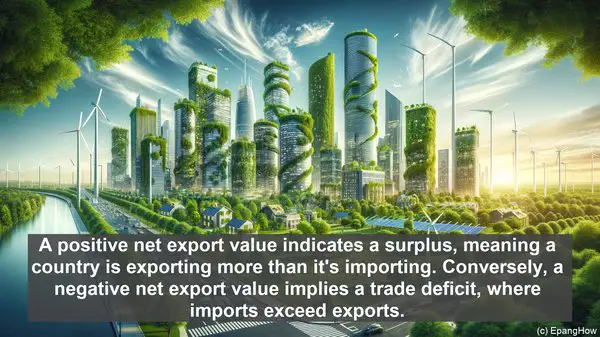Introduction: The World of International Trade
Hello everyone! Welcome to today’s article, where we’ll be exploring the intriguing world of international trade. It’s a realm that connects nations, fuels economies, and shapes our global landscape. Within this vast domain, we encounter numerous terms and concepts, some of which may seem similar at first glance. Today, we’ll be unraveling the distinction between two such terms: net exports and gross exports.

Defining Gross Exports: The Outward Flow of Goods and Services
Let’s begin by understanding what we mean by gross exports. In simple terms, gross exports refer to the total value of goods and services that a country sells to other nations. It encompasses everything from manufactured products to intellectual property licenses. Essentially, it quantifies the economic output that a nation is sending beyond its borders. Gross exports are a crucial indicator of a country’s economic activity and its integration into the global market.
The Intricacies of Net Exports: A Holistic Perspective
Now, let’s shift our focus to net exports. While gross exports capture the total value of a country’s outbound trade, net exports take into account the balance between exports and imports. In other words, it represents the difference between what a nation sells to the world and what it buys from it. Net exports are often seen as a measure of a country’s trade surplus or deficit. A positive net export value indicates a surplus, meaning a country is exporting more than it’s importing. Conversely, a negative net export value implies a trade deficit, where imports exceed exports.

Factors Influencing Net Exports: A Multifaceted Equation
Several factors contribute to a nation’s net export value. One of the primary drivers is the competitiveness of a country’s industries. When a nation’s goods and services are in high demand globally, its exports tend to surpass its imports, leading to a positive net export value. Additionally, exchange rates play a crucial role. A weaker domestic currency can make a country’s exports more affordable and attractive, boosting its net exports. On the other hand, factors such as import tariffs, trade policies, and global economic conditions can impact a nation’s net export value.
The Broader Implications: Beyond the Balance Sheet
While net exports are an essential economic indicator, their significance extends beyond the realm of trade balances. A positive net export value can contribute to a nation’s GDP growth, job creation, and overall economic well-being. Moreover, it can enhance a country’s foreign exchange reserves, bolstering its financial stability. On the other hand, persistent trade deficits can lead to economic challenges, including currency depreciation and debt accumulation. Hence, maintaining a favorable net export value is a priority for many nations.
